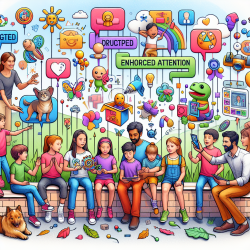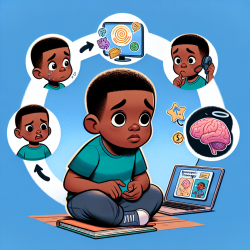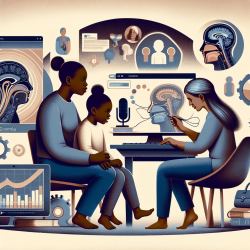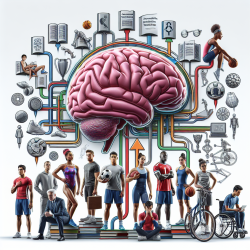As a practitioner dedicated to improving outcomes for children on the autism spectrum, you know the importance of joint attention (JA) skills. Joint attention is the shared focus between two individuals on an object or event, which is critical for social interaction and language development. A recent study titled Enhancing Joint Attention Skills in Children on the Autism Spectrum through an Augmented Reality Technology-Mediated Intervention offers groundbreaking insights into how augmented reality (AR) can be leveraged to enhance these essential skills.
What the Research Says
The study explored the impact of an AR-based intervention called the Pictogram Room on the responding to joint attention (RJA) skills of six children with autism aged 3 to 8 years. Over 12 weeks, the children engaged with AR games designed to improve their ability to follow gaze and point, both critical components of RJA. The results were promising: all participants showed significant improvements in their RJA skills, which were maintained over time and generalized to real-world situations.
Why Augmented Reality?
AR combines real-world information with computer-generated elements in real-time, creating an engaging and interactive learning environment. The Pictogram Room leverages AR to provide visual and auditory stimuli that are highly motivating for children with autism. Here are some key advantages:
- Tangible Presence: Unlike virtual reality, AR includes body representation, helping children track their movements and maintain body awareness.
- Natural Interaction: AR provides a more natural interaction experience, facilitating easier skill generalization to real-world settings.
- Personalization: The Pictogram Room allows for customization of visual and auditory stimuli based on each child's preferences, increasing engagement and effectiveness.
Implementing AR in Your Practice
Given the promising results of the study, incorporating AR into your practice could be highly beneficial. Here are some steps to get started:
- Assess the Tools: Ensure you have the necessary hardware (e.g., a PC, projector, Kinect for Xbox) and download the Pictogram Room software, which is free and available in multiple languages.
- Train Staff: While the Pictogram Room is user-friendly, it's essential to familiarize yourself and your staff with its functionalities to maximize its potential.
- Customize the Experience: Personalize the AR games based on each child's interests and sensory preferences to keep them engaged.
- Monitor Progress: Use the built-in scoring system to track each child's progress and adjust the intervention as needed.
Encouraging Further Research
While the study's results are encouraging, more research is needed to explore the full potential of AR in autism therapy. As a practitioner, you can contribute to this growing body of knowledge by documenting your experiences and outcomes when using AR interventions. Share your findings with the broader community to help refine and improve these innovative approaches.
To read the original research paper, please follow this link: Enhancing Joint Attention Skills in Children on the Autism Spectrum through an Augmented Reality Technology-Mediated Intervention.










